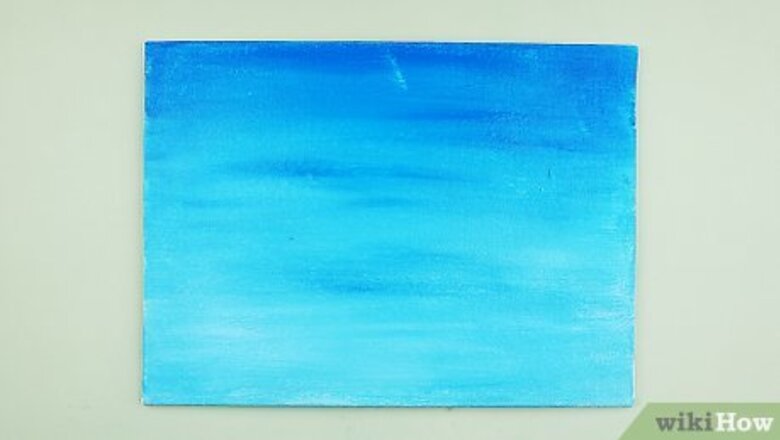
views
Painting Clouds in Acrylic
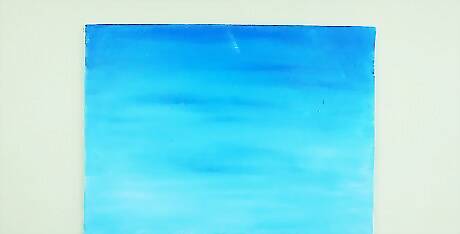
Create the background first. Whether you are creating a graduated blue sky or a sunrise, create the background before adding in the clouds.
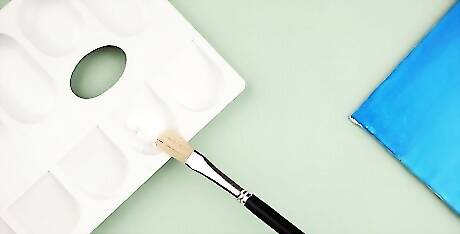
Start with a clean, dry brush. That is, don't add any water to the brush before you use it. Pour out white paint on your palette. Add a little bit of white to the brush.
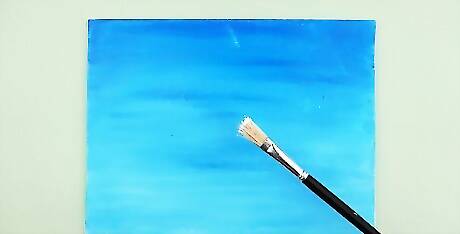
Decide where you want your clouds to go. You can do a landscaped painting with clouds just at the top. Alternatively, you can have the clouds be the whole painting.
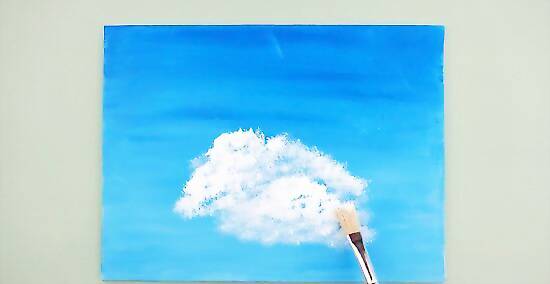
Brush the white on in light strokes. In gentle curving motions, brush the white onto the canvas. Keep the pressure light.
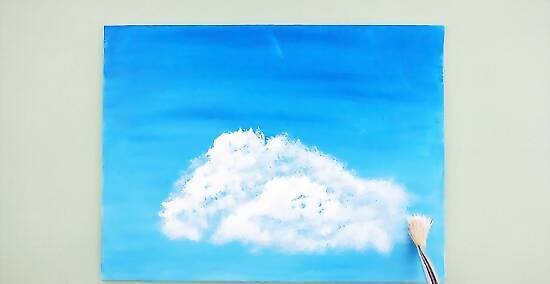
Expand the edges. Push the edges of the cloud out with your brush. Try to create the edges when you're running out of paint. That technique will give the clouds softer, feathery edges.
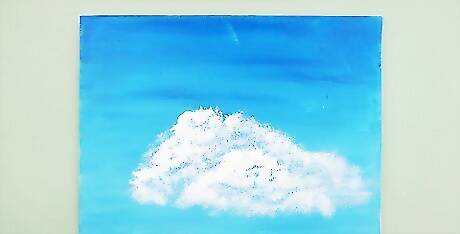
Wait for the white to dry. It will make it easier to add the shading underneath.
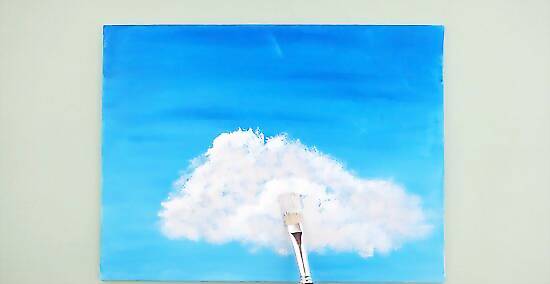
Add shading. Create a grey for the shading. You can create a dark purple to use for grey with a deep blue, a rosy color, and a brown-red color. You can also create your own grey combination.
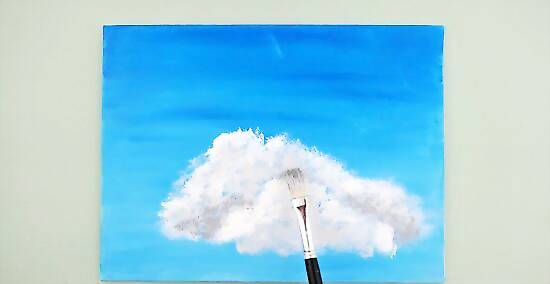
Use a different dry brush. Add a tiny bit of the grey to the brush. Wipe off any excess. Gently brush the underside of the clouds to give them depth.
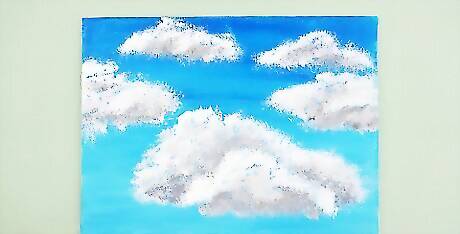
Make the clouds smaller near the horizon. Things off in the distance look smaller, so make your clouds smaller and fuzzier as you approach the horizon. To make them fuzzier, add even less paint to your brush when you create them.
Creating Clouds with Watercolor

Make sure you have enough paint in your mix. The paint will dry about half as light as it first looks on the paper. So it should look a little brighter than is natural when you're first painting.
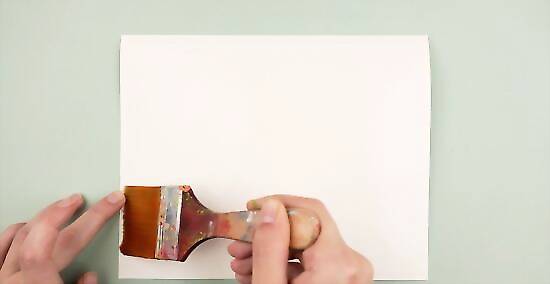
Lightly dampen the paper. Paint clean water across the paper, making it slightly damp.
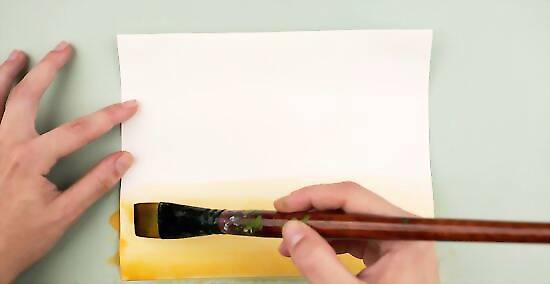
Add a bit of yellow ocher at the bottom. Gently paint in a light coating of yellow ocher near the bottom of the sky.
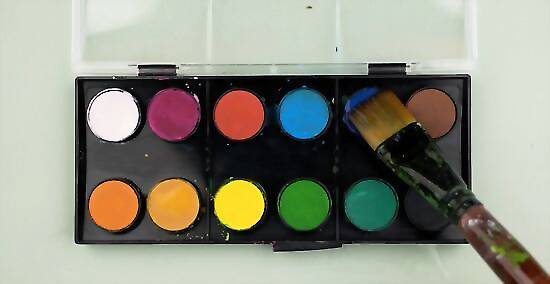
Fill your brush with ultramarine and water. Make it fairly dark. Paint across the top of the canvas with it.
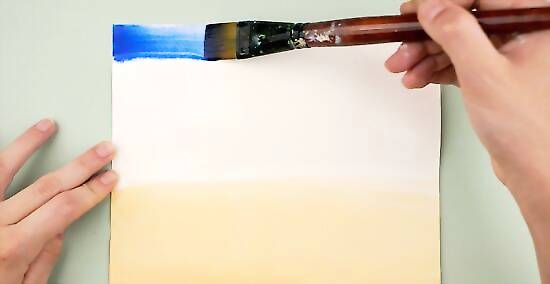
Paint a lighter swath underneath the first. Add more water to your brush. Add more of the ultramarine. Paint underneath the top color, slightly overlapping. Make it lighter than the first layer.
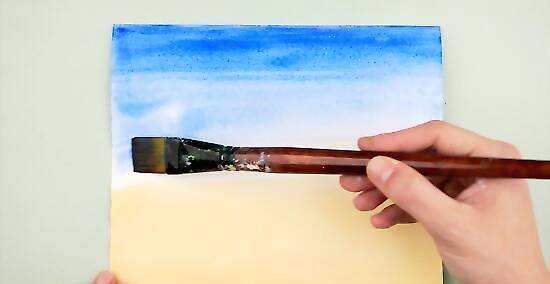
Keep adding lighter layers. You want to create a fading effect towards the bottom layer. The bottom layer should be a mix of pale yellow and a light bit of blue, as you already painted the bottom yellow ocher.

Dry off your brush. Wash the brush in the water, then dry it out on a paper towel.
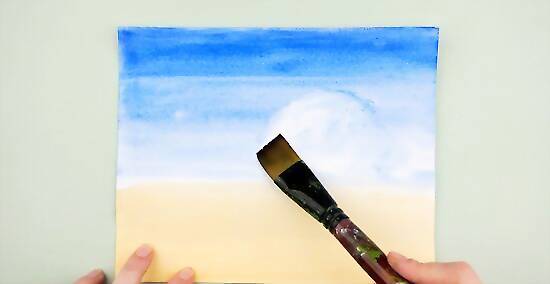
Roll the brush across the sky. The dry brush will pick up the pigment and color from the page, leaving white areas for clouds. As you roll, you can curve the brush slightly to create the look of clouds.
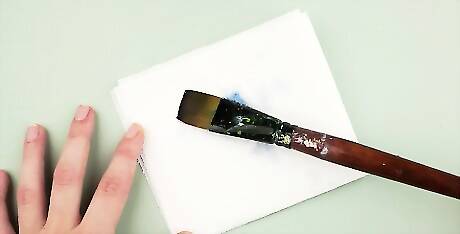
Dry the brush again. Between clouds, you will need to dry off the brush again. Otherwise, the brush will leave paint rather than absorbing it.
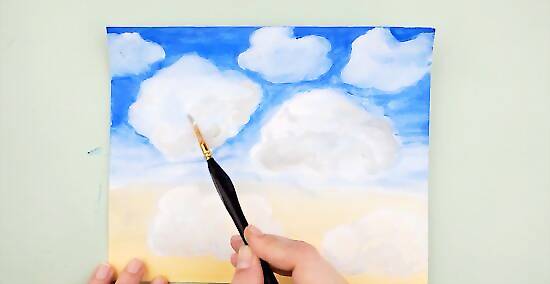
Add some grey. Using a strong grey (such as a purely mix of red and ultramarine), brush it on the underside of one part of the cloud. Leave the other side in white to show where the light is hitting it.

Remember to work quickly. Watercolors dry quickly, so you must work fast to create this effect.
Painting Clouds in Oil
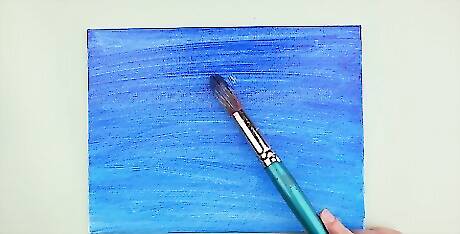
Create a background. Depending on the time of day, you could choose a light blue or a dark greyish purple. Paint the whole background in broad, even strokes.
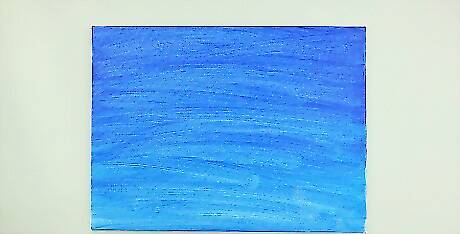
Let the oil paint dry. If you don't let it dry, you'll pick up the background paint in the clouds.
Sketch out the clouds. Using a dry brush, add some white and black to the background color you used. Sketch out the basic areas where the clouds will go with the brush. Think of clouds as boxes that have perspective so you can make them look like they have depth.
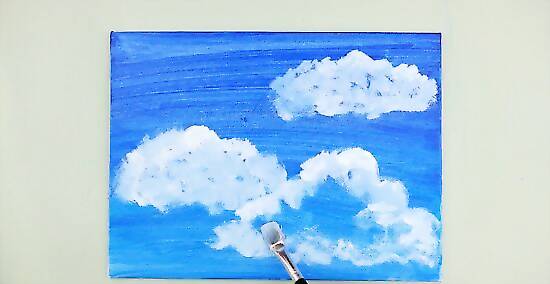
Layer over the clouds in lighter colors. Create shapes in the lighter colors. Work in circles to create cloud effects. To create lighter colors, add white to the original paint color as you go.
Add in patches of the background color. If you want to outline the clouds, you can add in areas of the background color. Most shadows in clouds are still lighter in color and value than the sky.
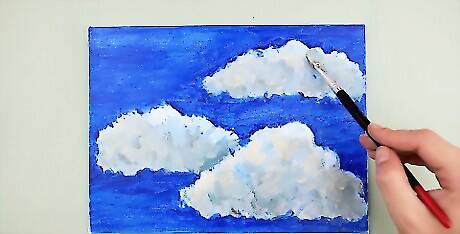
Add highlights in a cream color. You don't want the final highlights to be too stark against the other colors, so use an off-white or cream. Brush it around the shapes you created earlier, highlighting the tops of the clouds.















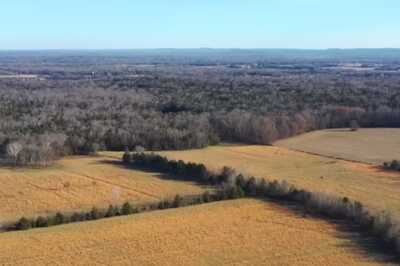



Comments
0 comment